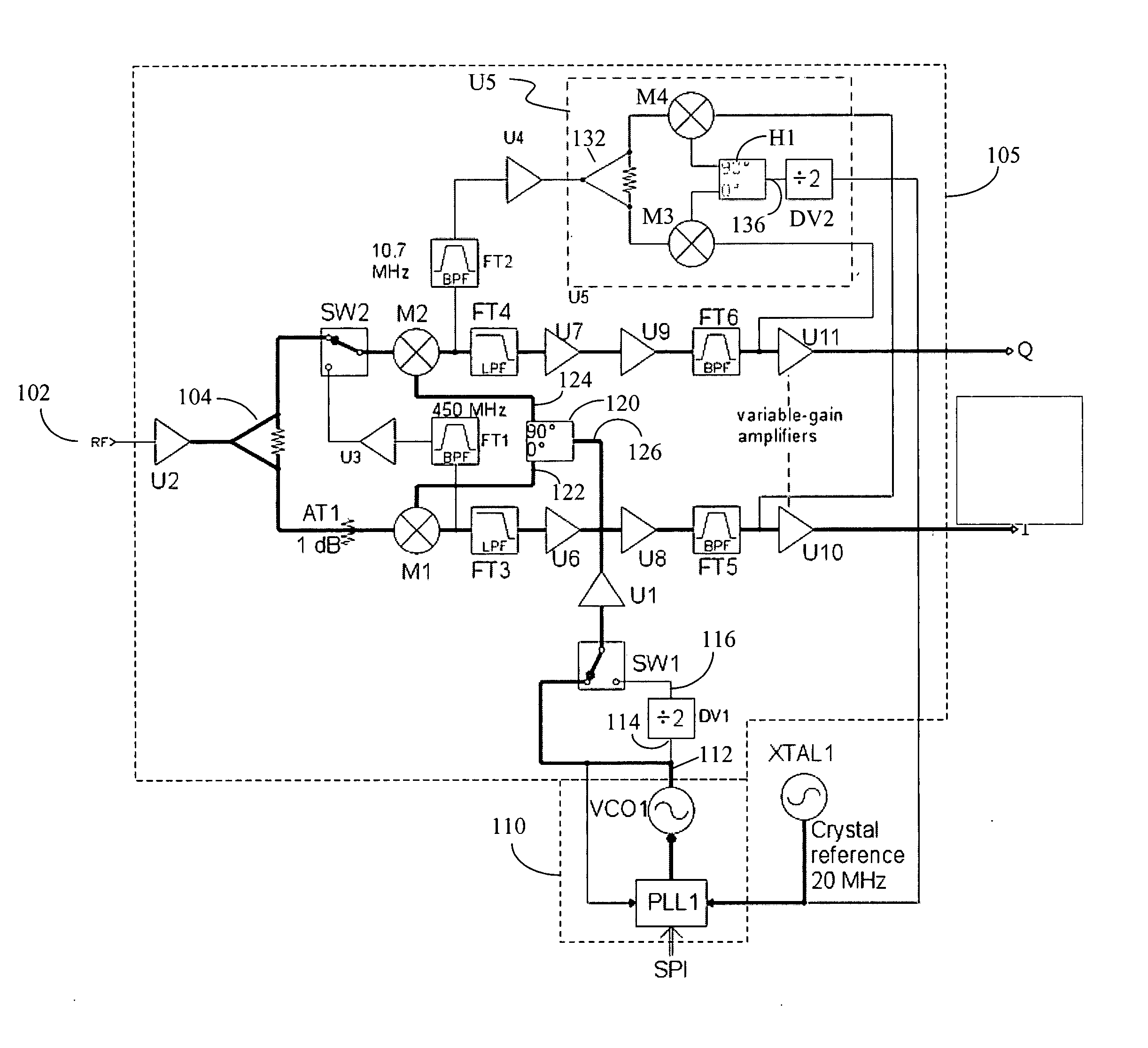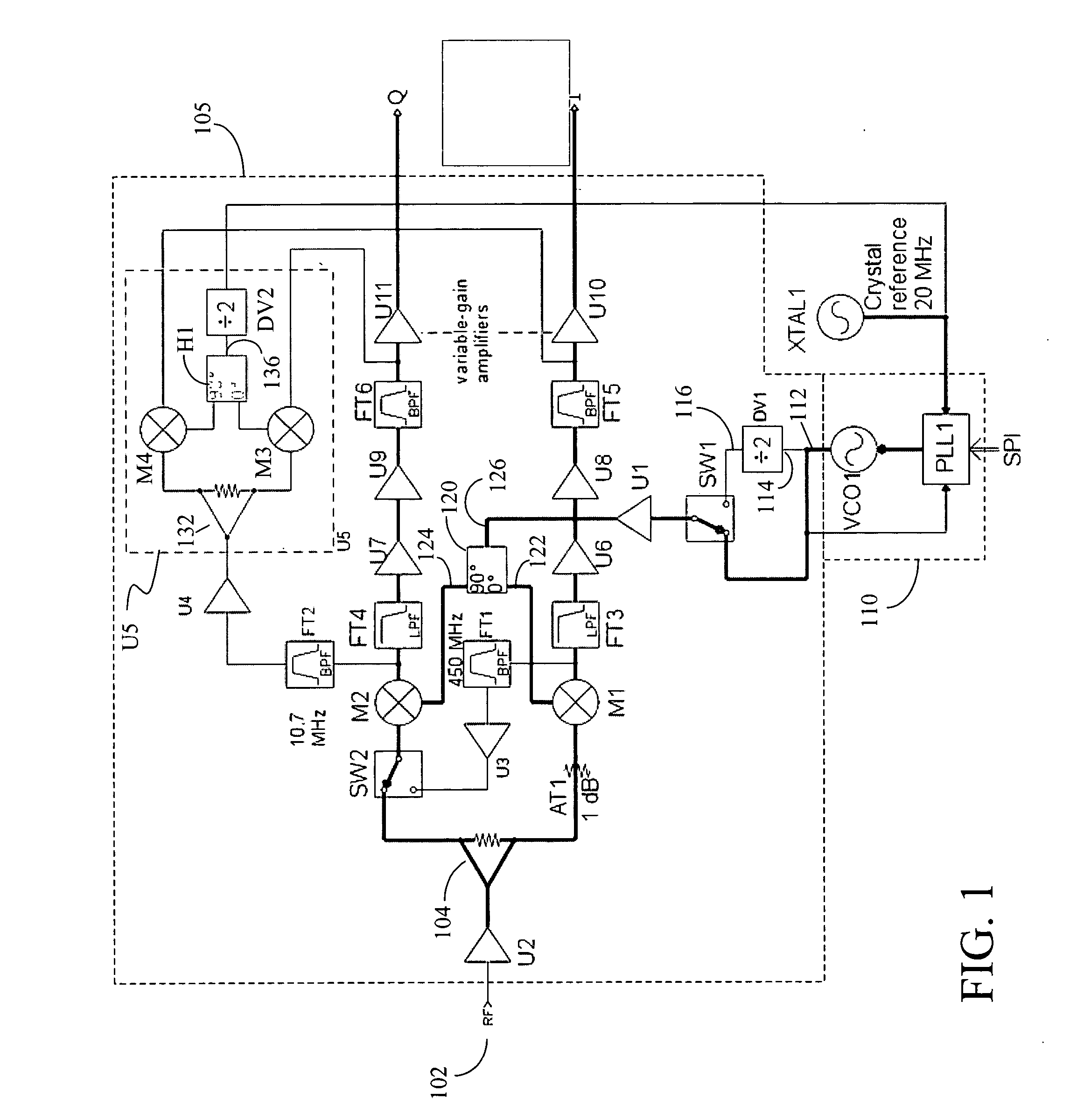Configurable homodyne/heterodyne radio receiver and RFID reader employing same
a radio receiver and heterodyne technology, applied in the field of wireless communication, can solve the problems of spurious responses, heterodyne receivers, and many more expensive than homodyne receivers, and achieve the effect of facilitating the listen-before-talk function, improving sensitivity, selectivity, and image rejection
- Summary
- Abstract
- Description
- Claims
- Application Information
AI Technical Summary
Benefits of technology
Problems solved by technology
Method used
Image
Examples
Embodiment Construction
[0030] In one aspect, the present invention provides a configurable homodyne / heterodyne radio frequency (RF) receiver. Referring to FIG. 1, a configurable homodyne / heterodyne radio frequency (RF) receiver (RF receiver) 100 according to one embodiment of the present invention includes a crystal reference generator XTAL1 configured to generate a clock signal at a reference frequency fref, and a frequency synthesizer 110 configured to receive a control signal SP1, to form a first continuous wave (CW) signal at a specified frequency fcw1 according to the control signal and using the clock signal as a reference, and to output the CW signal at its output 112.
[0031] RF receiver 100 further includes a configurable homodyne / heterodyne RF receiver module 105 having an RF input 102 for receiving an RF signal at an RF input frequency fin through an antenna (not shown), and first and second signal outputs I and Q for outputting demodulated in-phase (I) and quardrature (Q) signals, respectively,...
PUM
 Login to View More
Login to View More Abstract
Description
Claims
Application Information
 Login to View More
Login to View More - R&D
- Intellectual Property
- Life Sciences
- Materials
- Tech Scout
- Unparalleled Data Quality
- Higher Quality Content
- 60% Fewer Hallucinations
Browse by: Latest US Patents, China's latest patents, Technical Efficacy Thesaurus, Application Domain, Technology Topic, Popular Technical Reports.
© 2025 PatSnap. All rights reserved.Legal|Privacy policy|Modern Slavery Act Transparency Statement|Sitemap|About US| Contact US: help@patsnap.com



